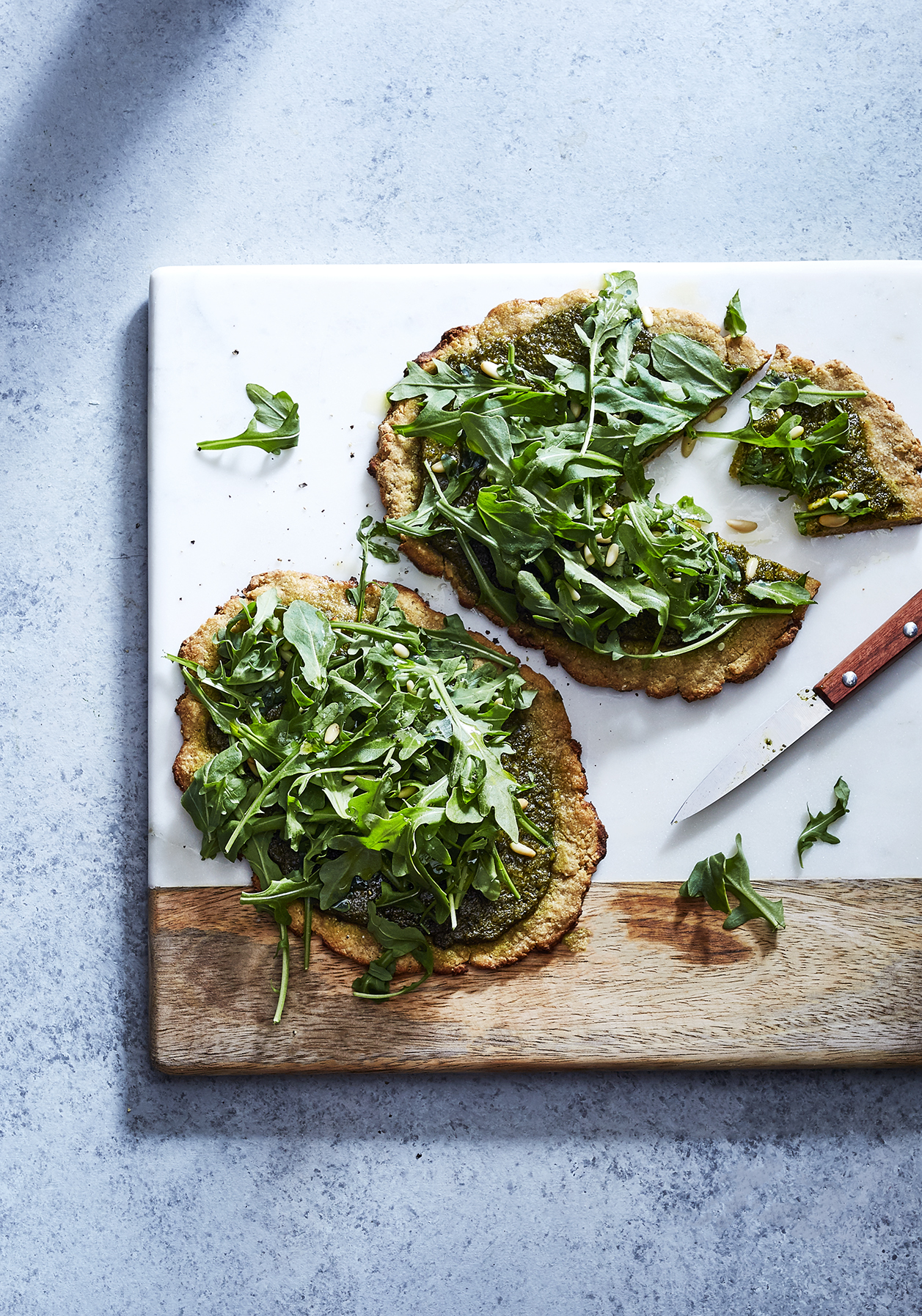Although it's technically Spring, the dreariness of New York is real. The rain and grey has been non-stop and is beginning to feel like what I imagine Seattle is like. Spring things are starting to pop up at the markets, but it just doesn't feel right to make rhubarb when the skies are this grey (but I'm trying). Making bright green sauces on repeat to combat this weather.
I've been completely overwhelmed by the amount of (great) new cookbooks on my shelves and lately - not enough time to indulge in them. I’m finally getting around to posting about Lily’s lovely new book, Good Clean Food. She similarly lives gluten-free, finding it curing her migraines and overall health issues - and obviously, I can relate so much to her story. I love her minimal sensibility, which is never intimidating and simple enough for everyday. This chickpea flatbread did not last long…
Chickpea Flatbreads with Chermoula, Pine Nuts & Arugula (Serves 2-4) Gluten-free + Vegan
*This flatbread is like a cuter pizza with infinite possibilities. I love it with this spicy chermoula, and if you do dairy, a tangy feta crumbled overtop would be amazing here. You'll probably have some sauce leftover: use it on roasted chicken or tofu, roasted vegetables, quinoa, etc. It's pretty amazing on anything.
Flatbread (Recipe from Good Clean Food)
- 3/4 cup warm water
- 1 teaspoon maple syrup
- 1 packet instant yeast (or 2 1/4 teaspoons)
- 1 cup chickpea flour
- 1/2 cup + 2 tablespoons oat flour
- 1/4 cup arrowroot flour
- 2 tablespoons psyllium husks
- 1 teaspoon sea salt
- 1 tablespoon olive oil, plus more for parchment
Chermoula:
- 1 1/2 cups roughly chopped cilantro
- 2 cups roughly chopped parsley
- 4 garlic cloves, roughly chopped
- 1 teaspoon red wine vinegar
- 1 teaspoon sweet paprika
- 1 teaspoon sumac
- 1 teaspoon coriander
- 1 lemon, juice
- 1/2 teaspoon cumin
- 1/2 teaspoon smoked paprika
- 3/4 teaspoon sea salt
- 1/2 cup olive oil
- Pinch of cayenne
Toppings:
- 1/4 cup pine nuts
- 2 handfuls wild arugula
- Sea salt, to taste
- Freshly ground pepper
In a large mixing bowl, combine the warm water and maple syrup. Sprinkle yeast over top and let sit for 10 minutes.
In a separate bowl, whisk together flours, psyllium husks and sea salt. Then mix in yeast mixture and olive oil, stirring well to combine. It should yield a slightly sticky dough that pulls away from the side of the bowl. Cover with a kitchen towel or plate, and let rise for 45 minutes in a warm place.
In the meantime, make chermoula: add all ingredients to a food processor and pulse until a semi-smooth sauce. Set aside.
Preheat the oven to 425 degrees. Add a sheet of parchment to an inverted baking sheet. Coat risen dough with a little olive oil and divide in two. Using your hands and a little more oil, form dough into two, semi-even flatbreads. Let rise another 10 minutes.
Brush the tops of dough with oil, then bake for 5 minutes. Prick the flatbreads with a fork, then bake an additional 5 minutes.
Top crusts with a generous dollop of chermoula, spreading evenly overtop (leaving some room for “crust”). Sprinkle pine nuts overtop, then bake another 5-7 minutes or until crust is browned and a bit crisp. Top with arugula, flaky sea salt, and freshly ground pepper.











